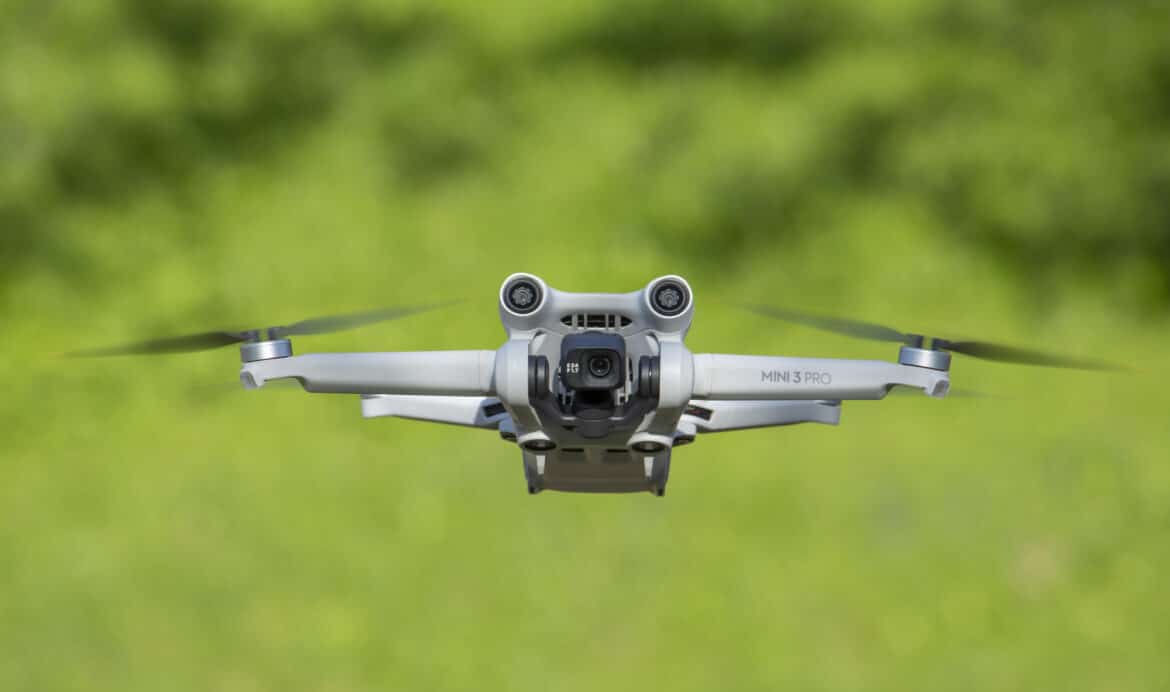Flying a drone: Tips for your first flight
Before you take your drone up in the air for the first time, you should familiarize yourself with a few basic aspects. The first flight is not only about getting to know the controls, but also about handling the device safely.
- Choose a day with as little wind as possible for your first flight. Drones are often caught by gusts of wind and blown off course.
- The first test flight should never take place indoors, even if you are only planning a short takeoff.
- Fly at a lower altitude at first to get a feel for controlling the drone. Avoid large crowds and heavily built-up areas.
Flying drones: Laws, minimum age, and other regulations
Since October 1, 2017, new regulations on the use of drones have been in force in Germany, which were enacted as part of the Drone Regulation. These regulations have since been amended and clarified several times.
- Minimum age: In principle, there is no legal age limit for flying a drone. However, children should only fly a drone under adult supervision. There are certain requirements for drones weighing more than 250 grams: Proof of knowledge is required, which can be applied for from the age of 14.
- Labeling requirement: Drones weighing more than 250 grams must be labeled with a fireproof sticker indicating the name and address of the owner. This sticker can be ordered online for around €5.
- Proof of knowledge: For drones weighing 2 kilograms or more, you must provide proof of knowledge. This certificate can be obtained from the Federal Aviation Authority (LBA) from the age of 16 or from the German Model Flying Association (DMFV) from the age of 14. Anyone who already holds a pilot’s license does not need any further proof.
- Drones weighing 5 kilograms or more also require explicit permission from the Federal Aviation Authority.
- Airspace and restrictions: In Germany, the general airspace for drone flight is known as Airspace G. As a rule, you are allowed to fly here unless you are near airports, military facilities, or densely populated areas.
- Flights over crowds, industrial facilities, federal agencies, prisons, nature reserves, and police and fire department operations are prohibited. In some major German cities, there are additional extensive flight bans that prohibit drone flights in large areas. Check in advance whether take-off is permitted in your region, for example on SkyFool.de.
Drones: Insurance and photo/film recordings
Before you start taking pictures or flying your drone regularly, you should be aware of your legal obligations. In addition to appropriate liability insurance, data protection and personal rights also play a key role.
- Liability insurance: Since 2005, all hobby drone pilots have been required to take out special liability insurance for model flying. This can be done through a local model flying club or the German Model Flying Association (DMFV). Alternatively, you can take out insurance through the German Model Sports Organization (DMO), which costs around $40 per year.
- Filming and photography: As a general rule, you may only use your drone to take pictures that would also be visible to a normal person without a drone. Filming private property, such as your neighbor’s garden, is not permitted.
- You need the express consent of individuals in order to film them. This rule does not apply to public events where individuals are not in the foreground – however, in such cases, you are not allowed to fly over crowds of people.
- Flying height and visibility: The maximum flying height for drones is 100 meters. Drones weighing less than 5 kilograms must always remain within the pilot’s field of vision. For heavier drones, you need special permission to fly outside the pilot’s field of vision. The same applies to night flights: a permit is also required here.
- VR glasses: Some drone models can be controlled with VR glasses. However, these drones may not fly higher than 30 meters. For longer distances, a second person must always keep an eye on the drone to ensure safety.
Additional important regulations for flying drones
In addition to the general regulations for flying drones, there are other regulations that you should be aware of. These include special no-fly zones, the protection of nature reserves, and safe handling in the vicinity of emergency services.
- Airport restricted zones and geofencing: Many drone manufacturers integrate a geofencing system into their devices that automatically informs drone pilots about restricted zones such as airports and military areas. Some drone apps also provide real-time information about no-fly zones. This technology helps to ensure that drones do not accidentally fly into sensitive areas.
- Drones near nature reserves and environmental protection areas: There are stricter regulations for flying in or over nature reserves, which are subject to regular change. In some states, drone flights in these zones are either completely prohibited or only possible with special permission. Therefore, check in advance whether there are any local restrictions.
- Drone use by police and fire departments: The use of drones near police or fire department operations is strictly regulated. Drones must not hinder the work of emergency services or endanger their safety. Civilians who fly near such operations risk heavy fines or even criminal charges.

